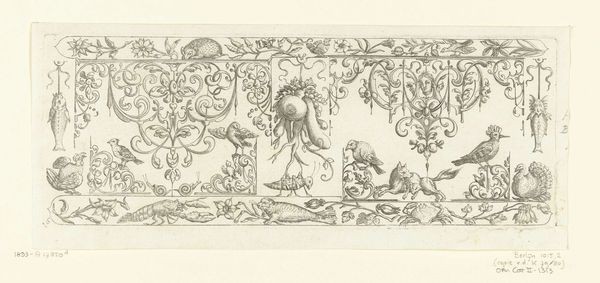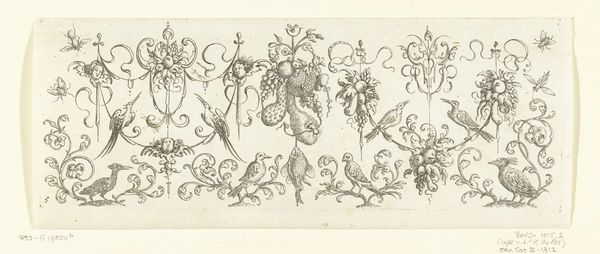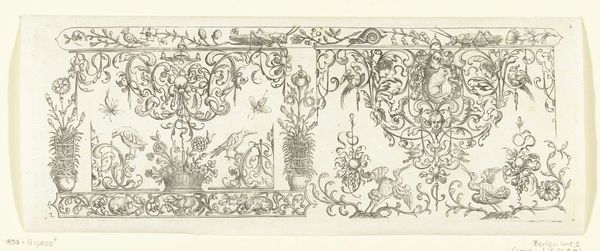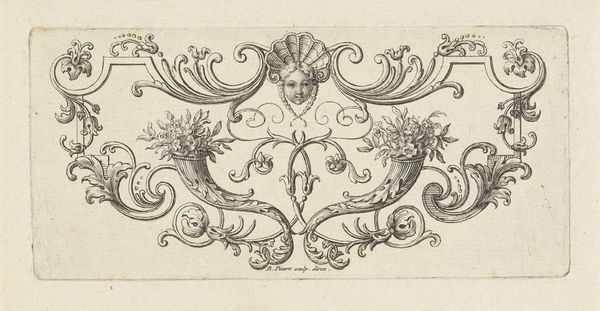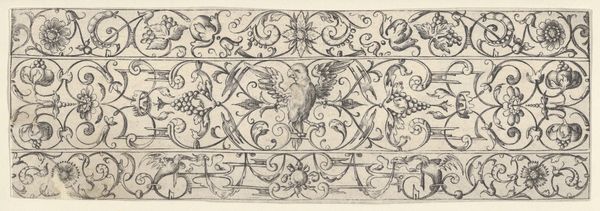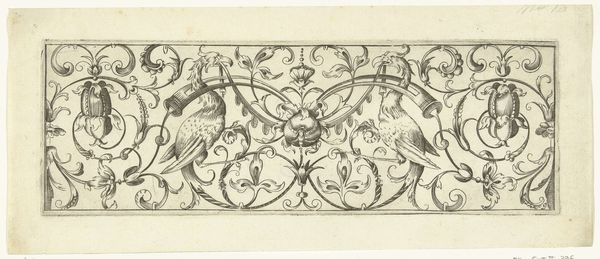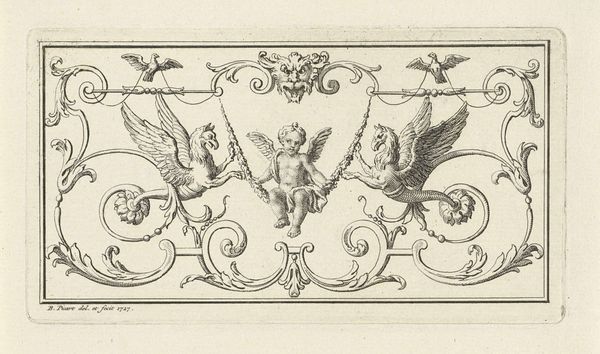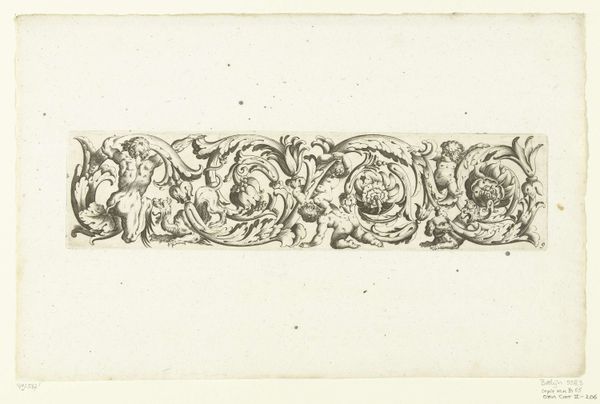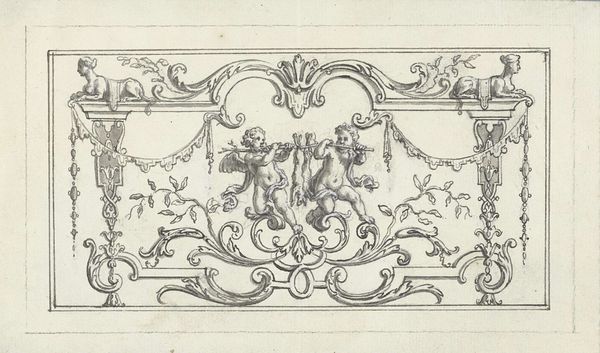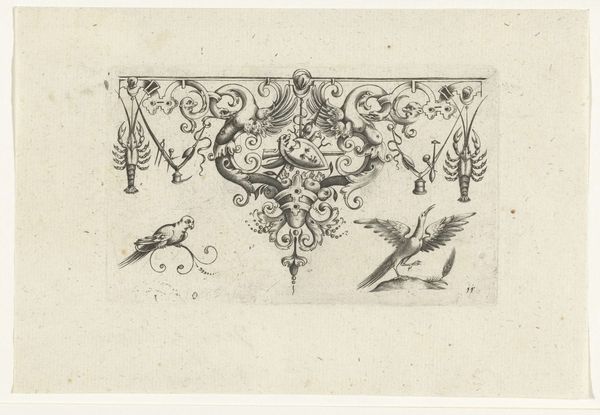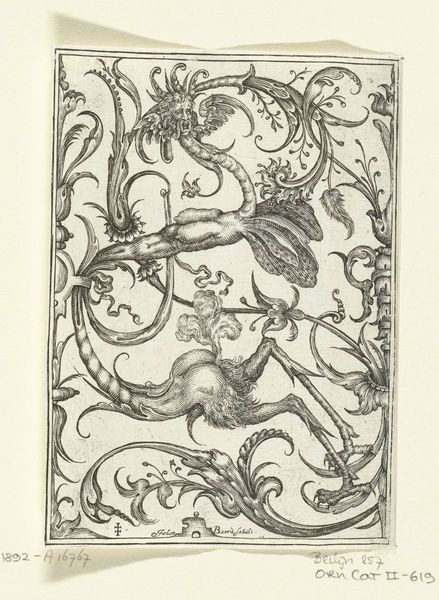
drawing, ink
#
drawing
#
baroque
#
animal
#
ink
#
line
Dimensions: height 78 mm, width 211 mm
Copyright: Rijks Museum: Open Domain
Curator: Welcome. We're looking at "Randdecoratie met bladranken en drie zeedieren," a decorative border drawing from after 1611, housed here at the Rijksmuseum. It was created using ink. Editor: My first thought is that this seems incredibly intricate, almost excessively so. It has a delicate feel to it. Are these designs for architectural ornamentation, perhaps? Curator: That's a keen observation. This kind of ornamental border was indeed often used for architectural details or in the decorative arts. It’s interesting how this kind of artwork helped in disseminating trends and styles. Notice how nature has been turned into ornament! Editor: Exactly! You've got foliage, these birds, the odd little sea creatures… The hand of the artist transforming natural materials. The lines are really prominent. How would a craftsman then take this image and translate it to the materials of a building or piece of furniture? Did the drawing serve as a pattern directly? Curator: Precisely. The drawing serves both as a pattern and as a kind of ideal form that other artists could draw inspiration from. Also note the labor of the artist creating this drawing, Henri Le Roy. These patterns reflect the demand for intricate details that often showed the patron’s high status. These visual markers are related to the dynamics of consumer culture in the early 17th century. Editor: Thinking about the making of such elaborate embellishments, that's what grabs me. This line-work is not spontaneous or improvisational, it’s extremely labor intensive, to be scaled up onto buildings or objects, and represents the work to be translated and reproduced in other workshops and through different trades. Curator: Definitely, and that is reflected in its historical and societal impact! Such ornamentation signaled taste, wealth, and power within court circles. We can thus read a drawing like this as more than just decoration but as active in the construction of social order at the time. Editor: It brings into focus just how material our markers of social standing truly are. Thinking about those who translated these ink drawings to a new materiality provides an alternative framework for valuing their labour. Curator: Well said. Looking at its process and socio-historical factors, it reveals some interesting facets regarding craft, design, and social structure. Editor: Yes, thinking about labor really changes how we interpret ornamentation as social indicators.
Comments
No comments
Be the first to comment and join the conversation on the ultimate creative platform.
